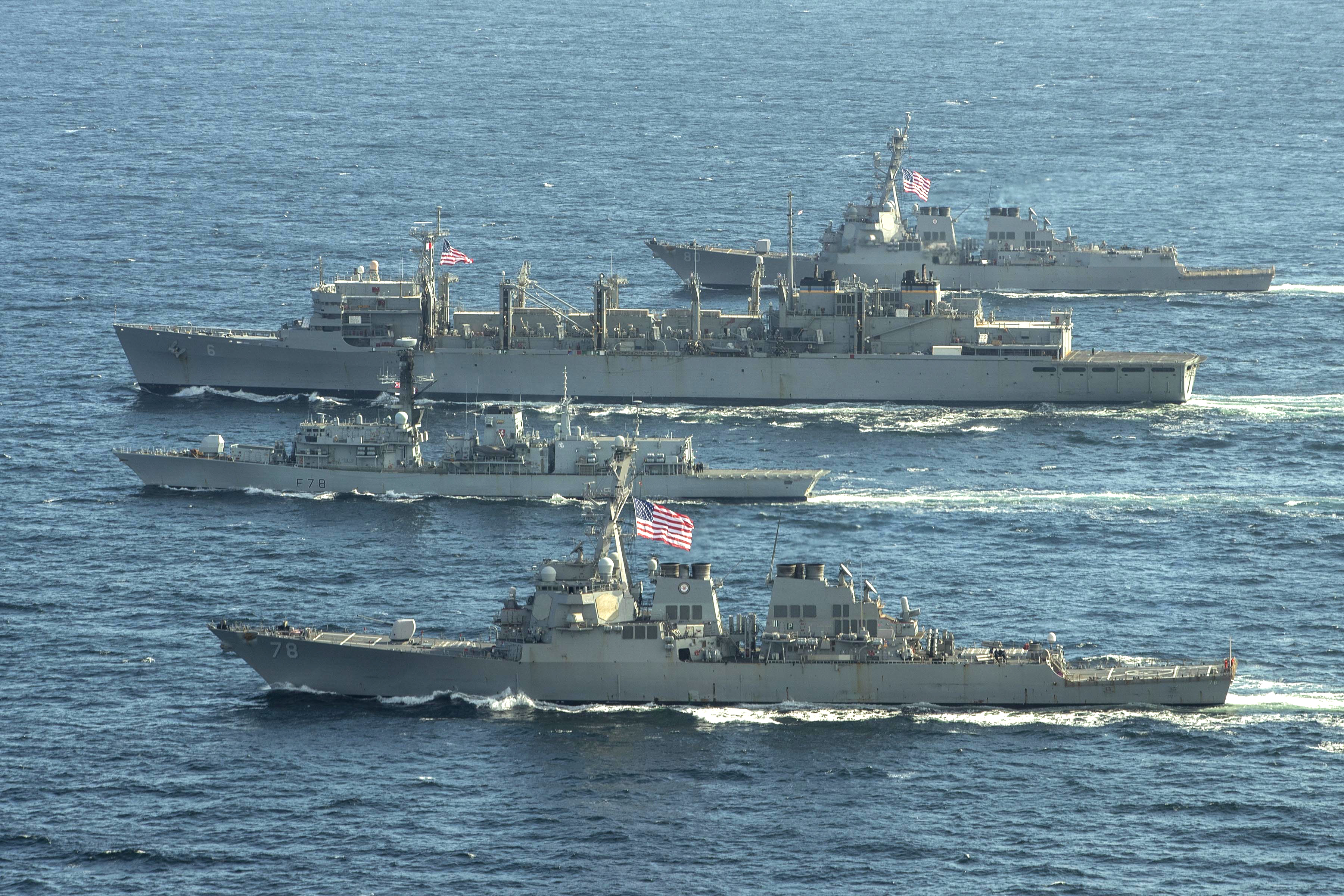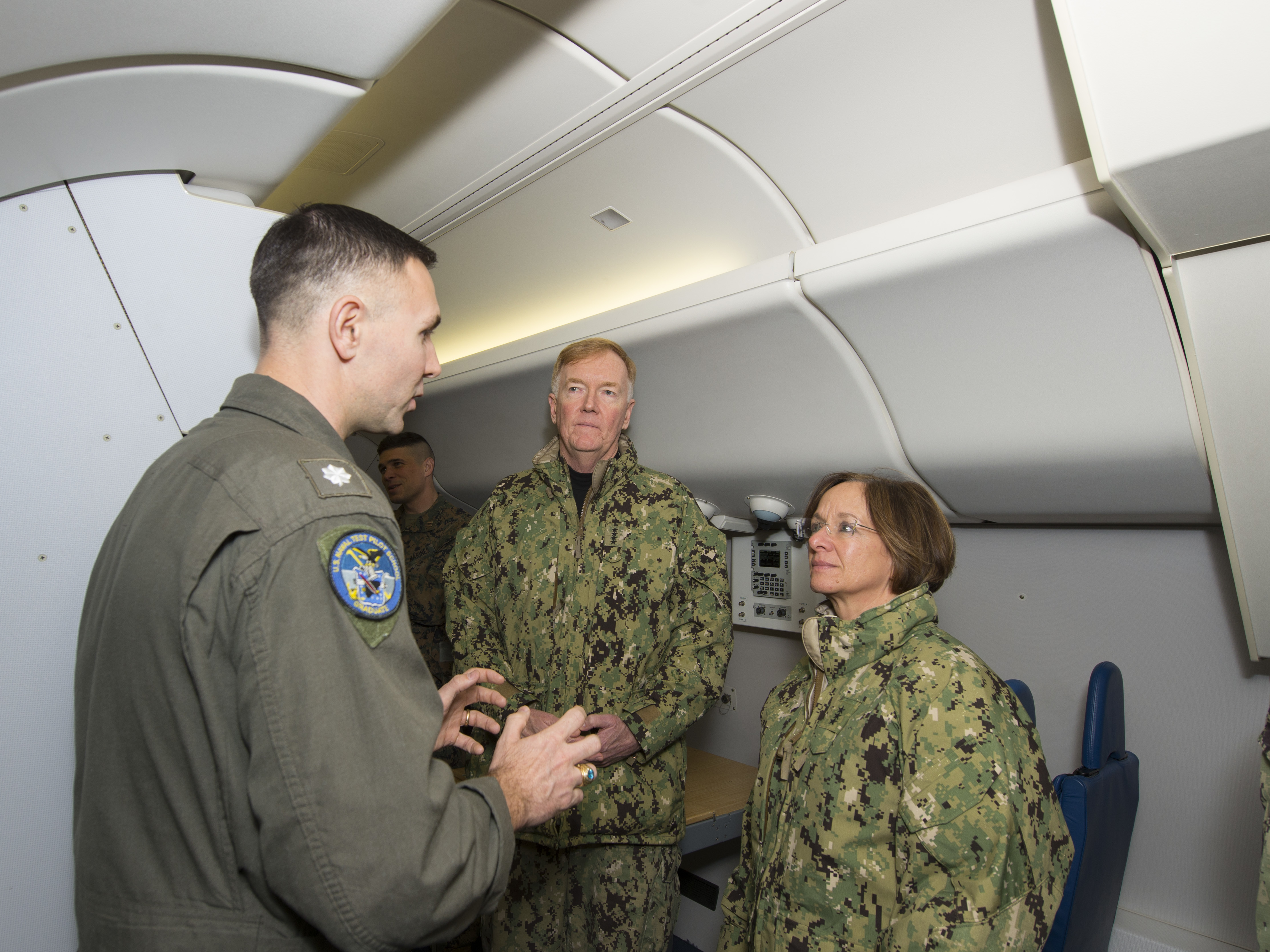
The head of U.S. naval forces in Europe would like to see more coordination and more dialogue in the Arctic, where military and commercial traffic are increasing, and so is the risk of miscalculations.
Adm. James Foggo said this week that, “as for the seas in the High North, you can expect to see us operating there, ensuring freedom of the seas and adherence to international norms and customs again and again.” But he also said that additional presence wasn’t enough.
“We need to look at innovative new approaches for the Arctic,” he said, citing several ideas being talked about by the Newport Arctic Scholars Initiative – operated out of the Naval War College in Newport, R.I., and led by a former Norwegian Navy chief, retired Rear Adm. Lars Saunes.
“The group consists of bright scholars and experienced naval officers representing seven of the eight Arctic nations. Unfortunately, Russia isn’t part of the group, but they should be. We all benefit when we engage in dialogue,” Foggo said during a virtual event hosted by the International Institute for Strategic Studies.
“The Newport group has some great suggestions they’re working on, things like restarting the Arctic Chiefs of Defense meetings, establishing an Arctic Ocean Maritime Symposium to bring together key stakeholders of the region’s navies and coast guards to better understand the challenges of the region. They also are looking at the Code for Unplanned Encounters at Sea, or CUES, established in 2014 at the Western Pacific Naval Symposium in Qingdao, China. It’s worked well in the Pacific for communication to avoid mistakes and miscalculations, so why not come up with a similar means of communicating between foreign ships in the Arctic? Right now only three Arctic states are members of CUES. I think there’s a lot of potential there for something like it. We need to keep having dialogue and look for ways to reduce the chance of any mistakes or any miscalculations.”
Foggo said that, with CUES in the South China Sea, ships know that if they encounter another ship, there’s a script for how to identify themselves and announce their intentions clearly to “eliminate any ambiguity and therefore hopefully eliminate any untoward incidents that may take place.”
“As ships encounter one another in the Northern Sea Route, in the Polar Route, in the Northwest Passage, there’s a need to communicate. There should be a copy of some kind of a scripted manner in which you communicate, a common language … there should be those capabilities on any ship operating in international waters,” Foggo said of the Arctic.
He also noted that NATO’s maritime strategy was last revised in 2011 and ought to be updated.
“In 2011 it didn’t factor in the opening in the Arctic, the illegal annexation of Crimea which took place in 2014, the resurgence of the Russian submarine force – six Kilo-class submarines in the Eastern Mediterranean and the Black Sea – or the Fourth Battle of the Atlantic, or growing Chinese activity throughout the region,” the admiral said.
“So I think we need to come up with a new strategy that helps us move forward in an increasingly complex geostrategic landscape.”
Though he stressed the need for dialogue, Foggo also pointed to the U.S. and NATO’s ability to deter and defend in the Arctic region due to concerning behavior from Russia and China there.
“Russia has the right to defend itself and protect its interests, no doubt about it. But it needs to exercise that right in accordance with international norms and customs and traditions. What I’ve seen from them so far gives me pause. Russia is already attempting to implement rules for the Northern Sea Route that violate international maritime laws and protocols,” he said.
“China is also increasingly seeking to exploit the Arctic. They’re eying investment opportunities that range from natural resource exploration to the future commercial maritime traffic potential of the ‘Polar Silk Road.’ With China having its own precedent for making bogus claims over international waterways in the South China Sea, it is possible that China will also seek to bend the rules in their favor in the Arctic.”
Foggo pointed to Exercise Trident Juncture 2018, with some 70 ships and 50,000 people, which was conducted in the Arctic in the late fall to test NATO allies’ ability to defend a partner or ally against an invasion in a harsh climate.
It was the largest exercise since the end of the Cold War, and we sent a clear message to Russia,” Foggo said.

Outside of the Arctic, he said communication with Russia was ongoing in many ways but could be improved to reduce the chance of future conflicts.
“I think there’s always room for dialogue. It’s going on right now with Chief of Defense (Valery) Gerasimov in Russia and our chief of defense, our Chairman of the Joint Chiefs (Gen. Mark) Milley. They talk all the time. Gen. (Tod) Wolters, my boss at [U.E. European Command], talks to Gen. Gerasimov all the time, and so does the (NATO) chairman of the military committee [Air Chief Marshal Sir Stuart] Peach. I’ve never seen that before, all three of those guys talk to the Russian chief of defense, and I can guarantee you that that dialogue has avoided mistakes and miscalculations in places like Syria and Iraq and throughout the theater where Russians are conducting combat operations.”
He noted Libya as an ongoing area of concern, though. He said Russia had created a “robust anti-access/area-denial network, an interlocking system of Russian coastal missiles, interceptor aircraft, air-defense systems, surface ships, and submarines” that threatens much of Europe.
“Now, think about what Russia is doing in Crimea and Tartus, and what threat they could pose by gaining a stronghold in Libya. This highlights the need to maintain a vigilant, highly capable naval presence throughout European waters,” he said.
“Libya concerns me, and that’s one where we need some dialogue and I think that would be an important place to focus on,” he later added.
To the point of protecting European waters from Russian efforts to block access, Foggo – again – called for more U.S. ships and aircraft to be pushed into his theater. He said talks were ongoing at the top leadership levels, but he made a pitch to supplement the four Arleigh Burke-class destroyers forward-deployed to Rota, Spain, and the P-8A Poseidon maritime patrol aircraft that operate out of Naval Air Station Sigonella, Italy.
“In this theater, we’re very very busy. We’re getting a lot of work out of those workhorses, those destroyers that I mentioned in Rota. The P-8 aircraft are a force multiplier for us. … We’ve been flying the wings off of those all over the theater doing [intelligence, surveillance and reconnaissance] and theater undersea warfare in both Europe down as far as the Mediterranean, and even some ISR on the African coast on both sides,” he said.
“I’d like to see some more transit presence and some more utilization of our carrier strike groups and our amphibious readiness groups. Right now I’m very very fortunate to have the Bataan Amphibious Readiness Group here in the theater in the Mediterranean. And while they’re here conducting their transit as they head through the Suez and on into other operational areas, we make best use of them to conduct exercises with our allies. Now there’s some COVID restrictions for that, but USS Oak Hill (LSD-51) was just up with USS Porter (DDG-78) in the Black Sea, as I mentioned. And so having that transit presence and having more of it – having more of the strike groups, the carrier strike groups coming through – would be very beneficial to us.”





